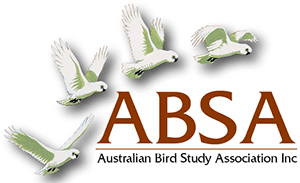Doing what comes naturally: are Australian Wood Ducks Chenonetta jubata pre-adapted for feeding in cities?
| Posted: |
30/04/2018 |
| Author(s): |
Alan Lill, Vincent Marsicovetere |
Some birds are pre-adapted for urban feeding without needing to substantially exploit the abundant novel food sources occurring in cities. This is apparently so because many cities contain the same or similar food resources to those that these birds exploit in nonurban environments, which they can therefore exploit in familiar ways, and for access to which they experience little interspecific competition. Endemic Wood Ducks
Chenonetta jubata are common in many eastern Australian cities. We determined whether they conform to this pre-adaptation syndrome by documenting: (1) their diet, foraging behaviour and involvement in interspecific interference competition for food in urban Melbourne, Australia and (2) their foraging habitat use in urban Melbourne and nearby nonurban areas. Australian Wood Ducks’ urban diet predominantly comprised grass leaves (72%) acquired by grazing (78% of foraging behaviour); supplementary food (bread) provided by humans was the focus of only 2% of their feeding. This pattern conforms with several published descriptions based on nonurban observations. Habitat immediately around foraging Wood Ducks was similar in urban and nonurban environments, particularly with respect to the area of short grass and herbs suitable for foraging, the area of free-standing water, and the percentage tree canopy cover. The species most commonly foraging close to Wood Ducks were the Eurasian Coot
Fulica atra and Pacific Black Duck
Anas superciliosa, for both of which grass is a minor, but significant, dietary constituent in cities. However, neither these species nor foraging neighbours of seven other bird species were involved in significant interference competition with foraging Wood Ducks. Thus, Wood Ducks seem to be pre-adapted for foraging in urban Melbourne (and probably other cities) because the city contains an abundant, familiar food resource that can be exploited using a familiar behaviour, apparently with little interference competition from other resident bird species.
>> Download Abstract |
File Size: 107 KB
>> Download Complete PDF | File Size: 1.13 MB
